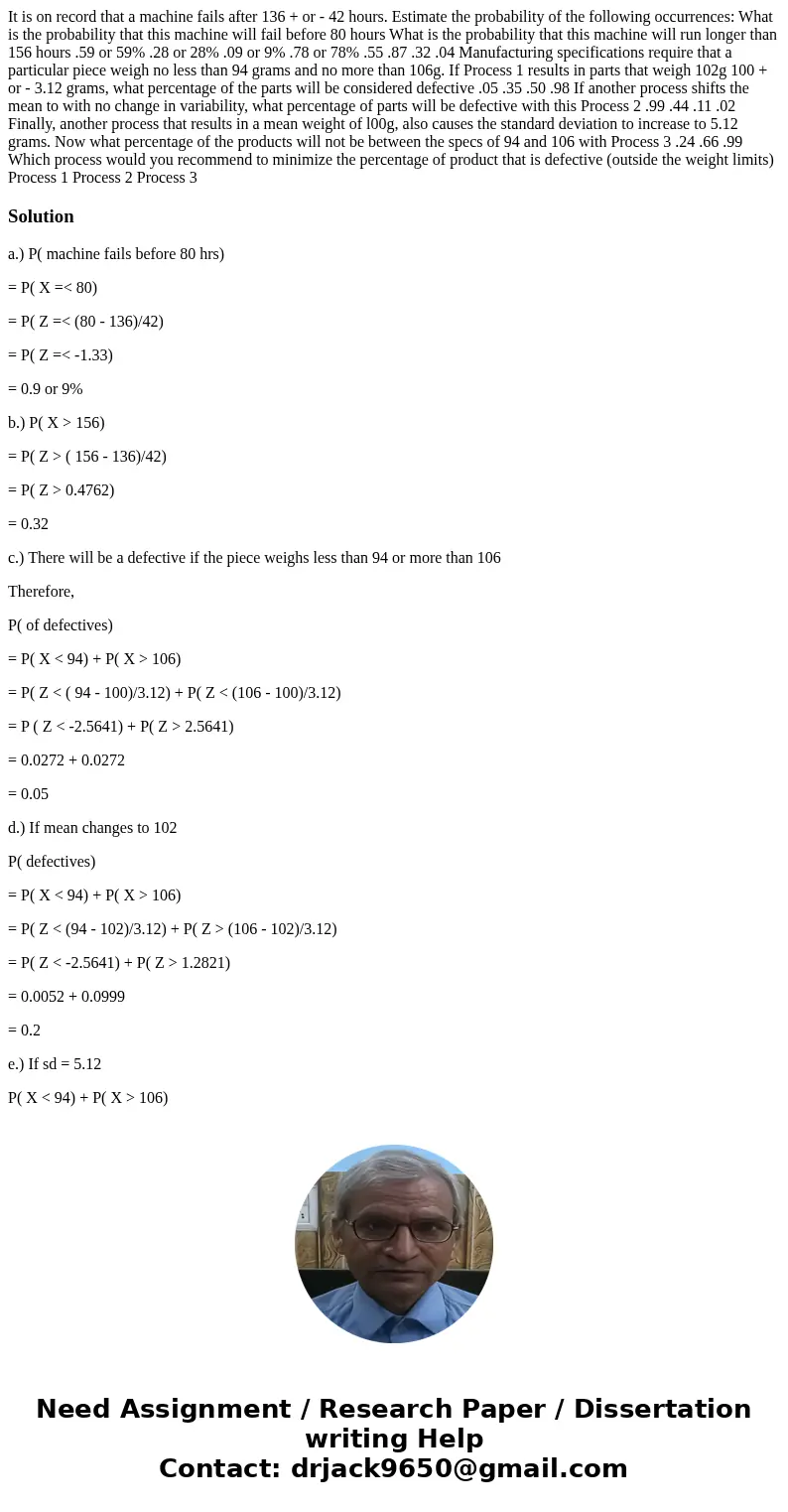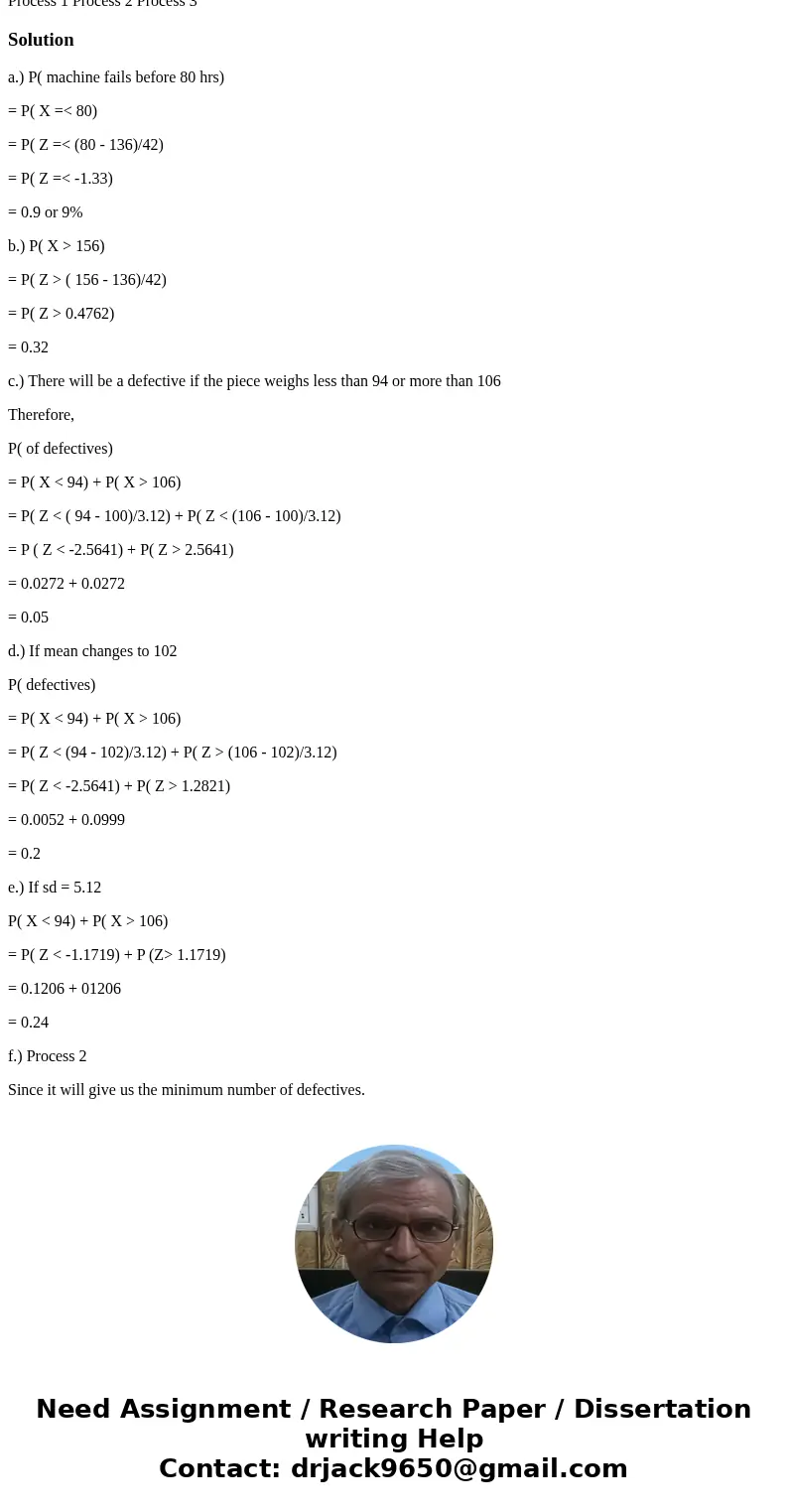It is on record that a machine fails after 136 or 42 hours
It is on record that a machine fails after 136 + or - 42 hours. Estimate the probability of the following occurrences: What is the probability that this machine will fail before 80 hours What is the probability that this machine will run longer than 156 hours .59 or 59% .28 or 28% .09 or 9% .78 or 78% .55 .87 .32 .04 Manufacturing specifications require that a particular piece weigh no less than 94 grams and no more than 106g. If Process 1 results in parts that weigh 102g 100 + or - 3.12 grams, what percentage of the parts will be considered defective .05 .35 .50 .98 If another process shifts the mean to with no change in variability, what percentage of parts will be defective with this Process 2 .99 .44 .11 .02 Finally, another process that results in a mean weight of l00g, also causes the standard deviation to increase to 5.12 grams. Now what percentage of the products will not be between the specs of 94 and 106 with Process 3 .24 .66 .99 Which process would you recommend to minimize the percentage of product that is defective (outside the weight limits) Process 1 Process 2 Process 3

Solution
a.) P( machine fails before 80 hrs)
= P( X =< 80)
= P( Z =< (80 - 136)/42)
= P( Z =< -1.33)
= 0.9 or 9%
b.) P( X > 156)
= P( Z > ( 156 - 136)/42)
= P( Z > 0.4762)
= 0.32
c.) There will be a defective if the piece weighs less than 94 or more than 106
Therefore,
P( of defectives)
= P( X < 94) + P( X > 106)
= P( Z < ( 94 - 100)/3.12) + P( Z < (106 - 100)/3.12)
= P ( Z < -2.5641) + P( Z > 2.5641)
= 0.0272 + 0.0272
= 0.05
d.) If mean changes to 102
P( defectives)
= P( X < 94) + P( X > 106)
= P( Z < (94 - 102)/3.12) + P( Z > (106 - 102)/3.12)
= P( Z < -2.5641) + P( Z > 1.2821)
= 0.0052 + 0.0999
= 0.2
e.) If sd = 5.12
P( X < 94) + P( X > 106)
= P( Z < -1.1719) + P (Z> 1.1719)
= 0.1206 + 01206
= 0.24
f.) Process 2
Since it will give us the minimum number of defectives.


 Homework Sourse
Homework Sourse